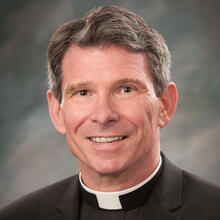Pablo Picasso once famously said that art is a lie that tells a truth. He’s right. There is something artificial about a work of art. No matter how realistic the novel or painting might be, we none-the-less recognize the presence of an artist, the artificer, in the work of art. And that’s how it should be. If art aspired to no more than realism, silk flowers would represent the apex of human creativity. But someone like the 19th century draughtsman and watercolorist John Ruskin didn’t spend years studying leaves because he sought to deceive. He wanted us to see something more in the leaf than nature put there. In his foliage we see the work of the human spirit.
All great art melds nature with spirit, the real with the unreal, or — perhaps better — the not-yet real. If a novel or movie meticulously did nothing more than reproduce daily life, it would be ignored. Who needs either, when we have life itself? But a great work of art reveals the real, all the while infusing it with spirit, the moment of insight, the not-yet real — what Gerard Manley Hopkins called the “inscape.”
Mary of Nazareth can be understood as God’s great work of art. Like the rest of us, she is a creature, a work of this natural world. She lived as human a life as any other and did so in poverty and obscurity. And yet, to the eyes of the believer, the work of an artist — in this case, her creator, redeemer, and sanctifier — infuses her very being. It breaks forth, in the words of the Jesuit poet, “like shining from shook foil.”
Catholic churches, with their crucifixes and their Stations of the Cross, are suffused with images of suffering and death. Sadly, we’re all too familiar with these realities, but we have no adequate idea how to represent the resurrection, or how to render its reflection in the assumption of Mary. Nature has taught us death; grace reveals the resurrection. We know how we die; we cannot imagine how she did. Even the word “death” is too prosaic for her passing. We speak of a falling asleep, an assumption.
Masterpieces do more than make us marvel that the artist saw more than we did. They also infuse within us the anguished aspiration, the conviction, that one more, slight push of the human spirit would break through and reveal the very glory of God. But when God is the artist, when we confess nothing less than the presence of uncreated grace in our midst — in this woman, “our sometime sister now our queen” (Hamlet 1.2.8) — then eyes must confess their clouds while tongues take up the praise.
Rev. Terrance W. Klein







